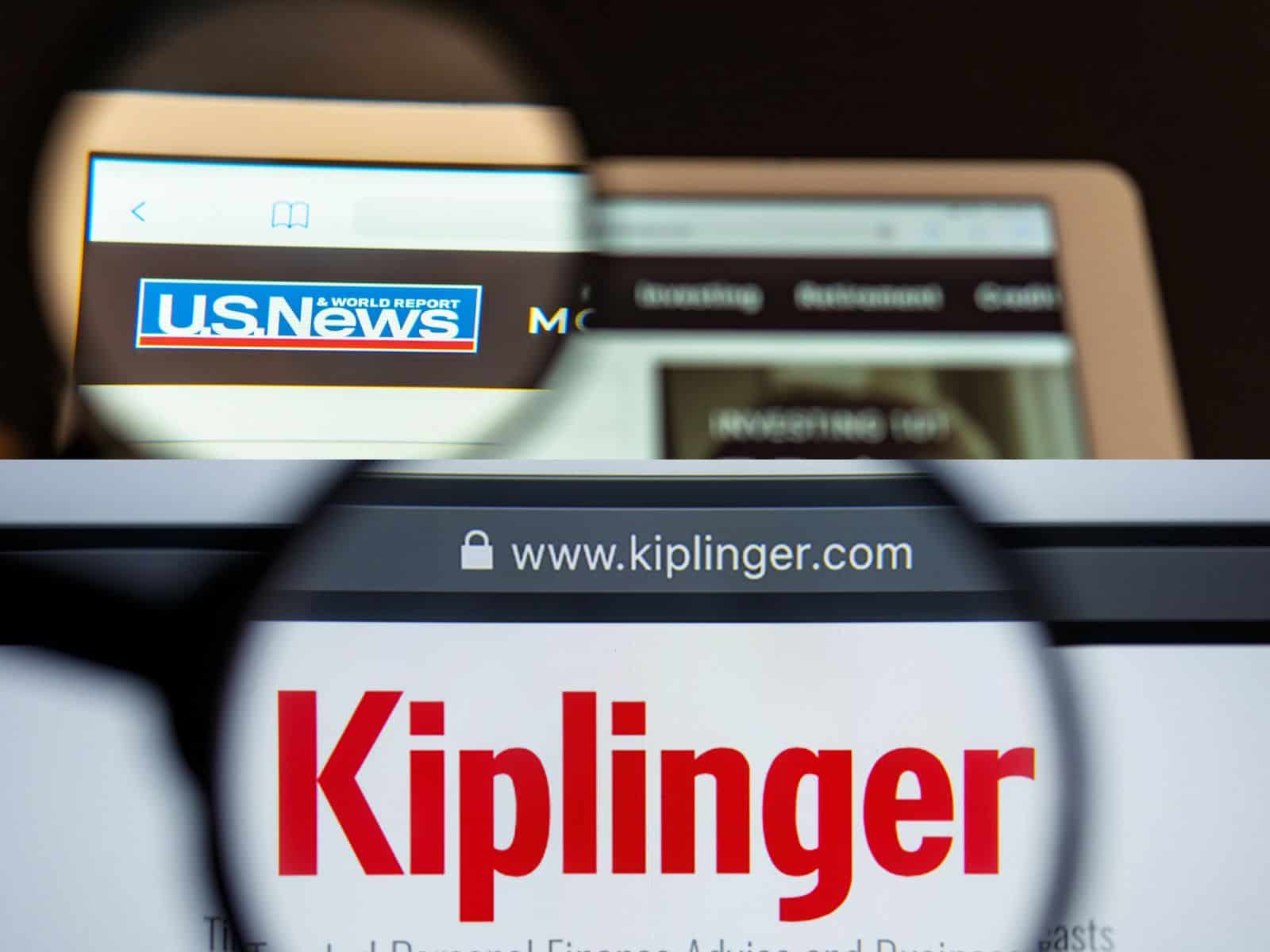Kiplinger vs. US News: The Great College Ranking Debate
One of the primary reasons why many high school graduates enter the workforce right away rather than step foot on a college campus first is that they cannot afford higher education. It’s a good thing that there are college ranking sites such as Kiplinger and US News that rank institutions based on value.
Kiplinger focuses on ranking institutions of higher education based on value alone. It has separate rankings for public, private and liberal arts schools, although it has a combined listing, too. Meanwhile, US News ranks institutions of higher education not only according to value but also based on other categories.
Wondering which of the two you should use as a college list-building guide? Keep reading!

Kiplinger vs. US News: Methodologies Used
The methodologies used by Kiplinger and US News involve scoring colleges and universities based on an assortment of ranking factors. All factors, however, can be grouped into academics and cost. Kiplinger and US News consider each pretty much equally, with the former emphasizing academics a little more.
In determining whether or not a particular college ranking site or college ranking category can provide the hand, you need when building your college list, all you have to do is check out its methodology.
Doing this allows you to establish whether or not it aligns with your personal preferences or needs.
Unlike most other rankers or ranking categories, there are only a handful of factors taken into account by both Kiplinger and US News when ranking US institutions of higher education with the best value.
Kiplinger has 6, while US News has 4.
Despite the difference in the number of ranking factors considered, the ones used by Kiplinger and US News can be grouped into 2 main factors: academics and cost. Kiplinger puts a little more emphasis on academic quality when ranking schools. US News, meanwhile, puts an equal amount of weight on both academic quality and cost quality.
Here’s a table demonstrating the grouped factors used by each college ranker and their combined weights:
| RANKING FACTORS | KIPLINGER | US NEWS |
|---|---|---|
| Academic Quality | 55% | 50% |
| Cost Quality | 45% | 50% |
Kiplinger assesses a school’s value by considering these factors:
Competitiveness
In order to have an idea of the quality of academics at a particular institution, Kiplinger looks into both acceptance rate and yield rate — the percentage of accepted students who actually enroll.
Also taken into account by the college ranking site is the percentage of first-time, first-year students who are high scorers on the SAT or ACT for it believes that admitting top performers can help enhance the academic atmosphere.
But given that many US colleges and universities are now test-optional and test-blind, this indicator seems a little antiquated.
Graduation rate
An important measure of academic quality is the graduation rate.
Because helping students earn an undergraduate degree is pivotal no matter how long it takes, Kiplinger scores schools according to 4-year, 5-year and 6-year graduation rates.
When ranking some of the best value schools in the land, Kiplinger gives extra credit to those who are able to graduate a lot of students with financial need.
Academic support
There are a couple of things Kiplinger looks into when evaluating the academic support of a college or university: freshman retention rate and student-to-faculty ratio.
As a general rule of thumb, the more freshmen students return to the same college the following year as sophomore students, the higher the satisfaction level in terms of things such as academics, facilities and social life.
On the other hand, the smaller the ratio between the students and faculty members, the more enhanced and tailored learning is.
Cost and financial aid
Because the goal is to rank schools according to value, it isn’t surprising that Kiplinger gives the most points to those with the lowest total costs — tuition, student fees, room and board, etc.
Needless to say, the college ranking site prefers institutions with the highest percentage of demonstrated need met.
When pitting public and private institutions, Kiplinger considers only out-of-state tuition and fees in order to lower the gap between the total costs and give private colleges and universities a fighting chance.
Student indebtedness
If schools provide enough financial assistance to their attendees who demonstrate need, naturally, students can save themselves from graduating neck-deep in debt.
That is why Kiplinger gives extra awards to schools with the most number of recipients of financial aid, thus taking them higher on its Best College Values ranking.
Kiplinger also takes into account the number of students who borrow money — it goes without saying that an institution wins more points the fewer the student loan borrowers.
Salary
Kiplinger acknowledges the importance of return on investment (ROI). And that is why it also evaluates the value of schools according to the median annual salary of their graduates 10 years after enrolling.
For this particular metric, the college ranking site turns to data provided by the US Department of Education (USDE).
But there’s a shortcoming that comes with this indicator: it does not differentiate the annual salaries of undergraduate students who joined the workforce right after graduation and those who went to graduate school before working.
The methodology employed by US News, meanwhile, is just as no-frills as Kiplinger’s.
However, the line separating academic quality and cost quality can seem blurred from its perspective.
This is especially true since, in the eyes of US News, academic quality should also consider the average discount price paid by full-time undergraduate students after need-based grants.
In any case, let’s take a look at the different factors US News considers in ranking schools value-wise:
Quality to price
Simply put, US News assesses the ratio of quality to price by determining the net cost for full-time undergraduate students after receiving the average need-based financial aid award.
When we say net cost, it means the total cost of attending college (tuition, student fees, room and board, transportation, etc.) minus aid.
Need-based aid
US News also takes into account the percentage of all first-time, first-year students attending the school full-time who are receiving need-based financial aid in the form of scholarships or grants.
The higher the percentage, as a general rule of thumb, the higher the score US News gives.
Students receiving need-based aid
In order to be scored on this particular ranking factor considered by US News, a school must have awarded need-based financial aid to at least 10% of its full-time attendees.
Average discount
Basically, this ranking factor under cost quality considers the percentage of an institution’s sticker price (the amount of all associated costs, from tuition to personal expenses) that was covered by the average need-based scholarship award.
Naturally, the higher the discount percentage, the higher the score of the school.
In order to have a much better idea of how the different factors used can affect college and university rankings based on value, the table below shows the resulting ranking.
The one called Best College Values is by Kiplinger, and the one named Best Value Schools is by US News.
| RANKINGS | BEST COLLEGE VALUES, KIPLINGER | BEST VALUE SCHOOLS, US NEWS |
|---|---|---|
| #1 | Princeton University | Harvard University |
| #2 | Davidson College | Princeton University |
| #3 | Swarthmore College | Yale University |
| #4 | Harvard University | Stanford University |
| #5 | Duke University | Massachusetts Institute of Technology |
| #6 | Pomona College | Rice University |
| #7 | Vanderbilt University | Dartmouth College |
| #8 | Rice University | Vanderbilt University |
| #9 | Washington and Lee University | Johns Hopkins University |
| #10 | Wellesley College | California Institute of Technology |
| #11 | Williams College | Brigham Young University – Provo |
| #12 | Dartmouth College | University of Chicago |
| #13 | Yale University | Northwestern University |
| #14 | Thomas Aquinas College | Brown University |
| #15 | University of North Carolina at Chapel Hill | University of North Carolina at Chapel Hill |
| #16 | Vassar College | Duke University |
| #17 | Massachusetts Institute of Technology | Washington University in St. Louis |
| #18 | California Institute of Technology | University of Pennsylvania |
| #19 | Amherst College | Gallaudet University |
| #20 | Stanford University | Cornell University |
It’s important to note that US News comes up with a single listing of the best value schools annually.
Kiplinger, meanwhile, produces different ones each time, all of which rank institutions according to value.
The college ranker has a separate list for private colleges, public colleges, and liberal arts colleges. The raking given above is a combination of all best value colleges — with complete disregard of the type.
So, Should You Use Kiplinger or US News?
There’s no denying that US News is more popular than Kiplinger. But when it comes to ranking colleges and universities based on value, Kiplinger has a more comprehensive methodology, which considers numerous factors many college-bound teens deem important. However, US News is more updated.
As of this writing, the most recent Best Value School ranking by US News was for the academic year 2022 to 2023. On the other hand, the latest one by Kiplinger was for the year 2019.
Methodology-wise, it’s obvious that Kiplinger’s is more detailed and inclusive.
So much so that you may find many of the factors it considers — including acceptance rate, student-to-faculty ratio and median annual salary — helpful in your quest to find a college that fits not only your preferred academic program and campus life but also the cost of attendance and professional career goal.
Unfortunately, Kiplinger is not as updated as US News in releasing value-based college rankings. Also, based on my personal experience, US News has a more user-friendly and comprehensive website than Kiplinger.
Read More:
- US News Ranking vs. QS Ranking
- US News vs. Forbes
- 14 Alternatives to US News Rankings
- Washington Monthly vs. US News
- Niche vs. US News
Disclaimer: The views and opinions expressed in this article are those of the authors and do not necessarily represent those of the College Reality Check.





